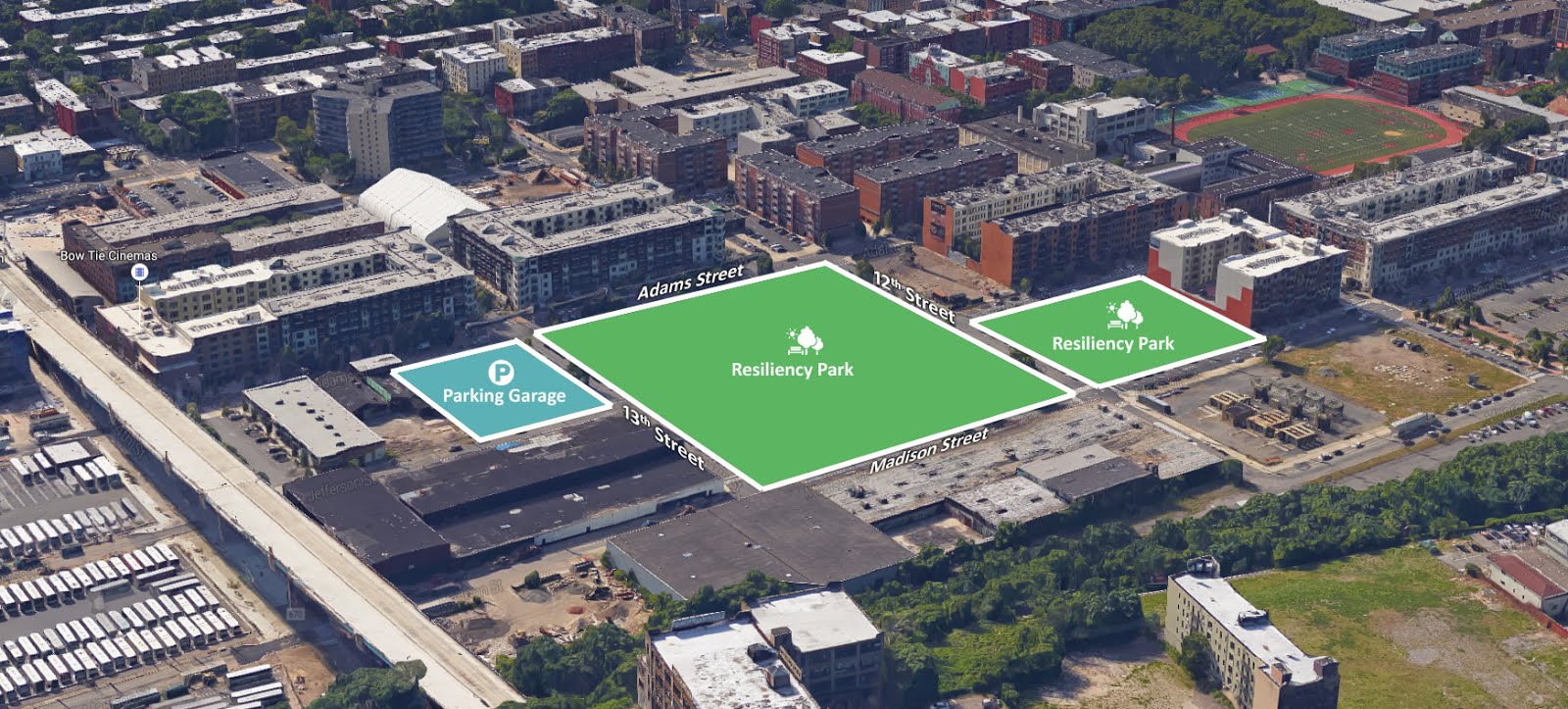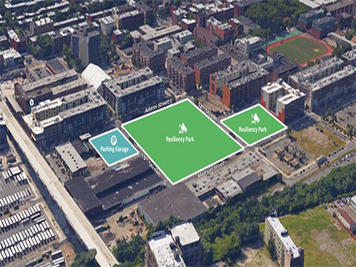The City of Hoboken has acquired the BASF property for $30 million. Construction costs, including underground flood retention basins, will add an estimated $19.5 million. By Ron Hine | FBW | October 6, 2016
Nearly all of the great parks and most successful ones in this country are bounded by streets, thus providing a clear delineation between public and private space. The trees, landscape design and park structures are essential elements. But the buildings and blocks surrounding the park are equally important. Some of New York City’s architectural gems face Central Park. The value of the residential and commercial buildings are greatly enhanced by the fact that their front doors, abutting the front lot line, face the street and the park. To make the BASF site a successful park, the City needs to visualize what the surrounding blocks and buildings will look like. Since this is formerly an industrial neighborhood, with a number of vacant warehouse-type structures that are of little value, the new residential buildings that will eventually be built helps to define the park space. Gramercy Park in New York City, although one of the City’s only private parks, is largely defined by the architecture surrounding the park. There is a solid wall of buildings and some outstanding architecture facing the streets that bound the park, some of them rising as high as twelve stories. There are many other examples similar to this that Hoboken should examine in order to come up with a plan that will make the BASF site an outstanding park. The City of Hoboken’s proposal to situate a public parking garage across from the BASF park is truly misguided. Presently, there is little demand for parking in this neighborhood. All of the new development will be required to provide parking for its residents. Because this lot faces what will be a new park, it has great value. But building a public parking garage at this location devalues the park and greatly detracts from the overall plan. The pricetag for the BASF site is certainly a shock. Acquisition and construction costs have escalated to nearly $50 million. The bonding ordinance that is being adopted by the City has put taxpayers on the hook for the underground flood retention basins that represent about 20% of this cost. The $230 million federal grant for the Hoboken area Rebuild by Design project, that could have covered the cost of building the retention basins, will instead be consumed by the floodwalls that could total upwards of $275 million to construct.
The portion of the BASF property (Block 107) bounded by the four streets — 12th, 13th, Adams & Madison — provides for a generous 4.27 acre park. The park plan would be improved by developing the garage site (Block 113, Lot 1) and the lot to the south (Block 103, Lots 7-26), thus bounding the park with buildings, hopefully well designed. Since the sales prices for the land is about $5 million per acre, selling these two sites would provide $10 million that would cover the cost of building the park itself. The City’s commitment to build parks needs to be matched with a comprehensive open space plan that identifies all the potential sites that can be secured for parkland and how they can be paid for. The City must be creative in how it finances these transactions, bonding perhaps being a last resort. Hoboken is a town coveted by developers, perhaps more so than any other municipality in New Jersey. This can be used to the City’s advantage so that opportunities will not be missed to provide public open for its ever-growing population.

Related links
Public parks provide essential benefits
Col. Stevens vision for Hoboken still valid 200 years later
Editorial: A Once-in-a-century Opportunity
Plan for the Hoboken Waterfont
Hoboken’s first parks established in 1804


